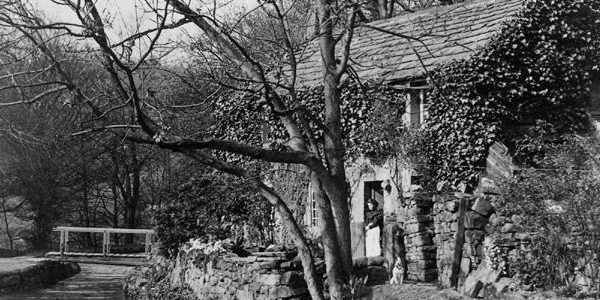
December 19, 2018, by Jonathan Memel
The Aqueduct Cottage
Our first guest blog post comes from Ron Common, a Derbyshire resident who has volunteered in the area around Florence Nightingale’s home as a DerwentWISE Cultural Heritage Volunteer. Ron has been championing the case for an abandoned building standing on what is known as the ‘Nightingale Branch’ of the Cromford Canal. You can find out more on the Friends of the Aqueduct Cottage Group and Friends of the Cromford Canal website. If you’re in the area, you can visit the cottage and the surrounding woodland by using this print-out Lea Wood Heritage Trail Map (thanks to the Derbyshire Wildlife Trust for that one!). To express interest in writing a guest blog, see our get involved page.
Leading image: Friends of the Cromford Canal Archives.
By Ron Common
Nestled in a crook of the Cromford Canal, a short walk from High Peak Junction, stands a humble cottage. For many years, regular walkers along this stretch of the canal have witnessed its grad
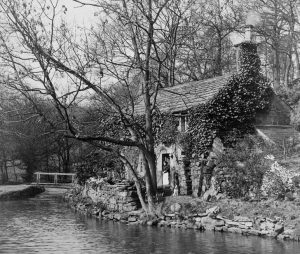
Photo credit: Friends of the Cromford Canal Archives.
ual decline. As the roof collapsed, the stonework crumbled and the surrounding woodland vegetation spread to reclaim the remains, many would have concluded that it was only a matter of time before this prettiest of cottages was finally lost. But if you go down to the (Lea) woods today you are sure of a big surprise, because in recent years something of a transformation has occurred that has rescued this charming little cottage back from the brink of disaster. The encroaching vegetation has been cleared, the stonework stabilised, and the cottage is once again standing resplendent – a loved ruin poised to make an exciting come-back, and with good reason . . .
Built by a Nightingale
This lengthman’s and lock-keeper’s cottage was built in 1802 by Peter Nightingale, who left his Derbyshire estate to his nephew William Shore, Florence Nightingale’s father. The cottage stands at the entrance of the privately owned Lea Wood Branch, which provided access to a number of quarries, two lead-works, cotton mills and a hat factory. The branch was built jointly by Peter Nightingale and the Cromford Canal Company to resolve a dispute over the water supply to the developing industries at Lea Bridge and Lea Wharf.
Florence and the Eatons
Florence Nightingale is thought to have been friends with later occupants of the cottage, the Eaton Family, during her time at Lea Hurst. The Nightingale home stands on the hilltop above the canalside cottage.
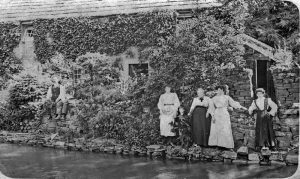
The Eaton family gathered outside Aqueduct Cottage. Anne Eaton (the older lady in the photo) is thought to have known Florence Nightingale . Her family lived at Aqueduct Cottage from the 1880s to the 1930s. Photo credit: Caron Mellor, scanned by Hugh Potter.
Following the end of the canal’s use for commercial transport, the cottage continued to be used to house workers for local businesses and the deeds show that it had various commercial owners during its 170 years as a canal-side dwelling. The last known occupant was a Mr Bowler who lived at the cottage until early 1970, the total lack of services no doubt being a factor in his departure.
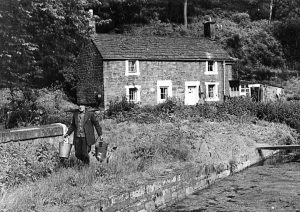
Mr Bowmer, the last resident at the cottage, heads off to fetch drinking water from springs at High Peak Junction. Photo credit: FCC Archives
The cottage was then “adopted” as a walkers’ shelter for a period of time and was maintained by volunteers of the Wayfarer’s walking group (the name “Wayfarers” can still be seen painted above the door). Sadly, however, the cottage was vandalised and thereafter ceased to be used. Inevitably, after decades of neglect, the cottage became derelict.
The Road to Recovery
The road to recovery started back in 2012, when a Trust, established by the residents of Lea, Dethick and Holloway to acquire ownership of Lea Wood, generously gifted the estate, including Aqueduct Cottage, to the Derbyshire Wildlife Trust (DWT) to ensure the wood remained accessible to the public and to maintain it in perpetuity. The ancient and beautiful Lea Wood became one of DWT’s designated Nature Reserves. A Heritage Trail Map was soon produced and a full management programme established. The question of what to do with the derelict cottage presented DWT with a unique challenge that needed special attention. Luckily, in September 2013, the five-year Heritage Lottery-funded landscape partnership scheme DerwentWISE provided the opportunity to commission a study of development options.
The results of the subsequent restoration work are nothing short of dramatic. The cottage was hardly visible due to the trees and other vegetation that had engulfed the building, but these have now been completely cleared and the cottage structure and its out-buildings are now, once again, in full view from the towpath. One of the working groups also managed to recover several stones from the cottage that had mysteriously found their way into the canal bed, which only became visible when the sink hole drained this stretch of the canal!
The masonry stabilisation work was completed by local restoration specialist Andrew Churchman and involved repairing holes, propping fragile walls and openings, and boarding the front door and windows to secure the building. The result is that the much-loved cottage has finally turned a corner. One of the most heart-warming aspects of this project is the affection that local people have for the cottage. Every time our working party was on site, passers-by would stop and enquire, or share fond memories of the place, and interest in the cottage’s future continues to grow.
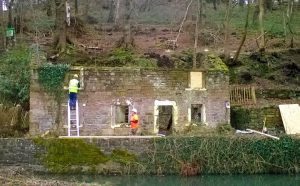
The masonry stabilisation work was completed by local specialist Andrew Churchman. It involved repairing holes and propping fragile walls and openings. Photo credit: Ian Scrimshaw
Local Affection
A good example of this affection came when four local artists, Ruth Gray, Abigail Sawyer, Joanna McPherson and Mandy-Jane Ahlfors, kindly volunteered to create a series of paintings to cover the cottage’s windows. Based on the theme “Window into Wildlife”, the six artworks served as a unique and colourful display of the biodiversity of the Lea Wood Nature Reserve beyond.
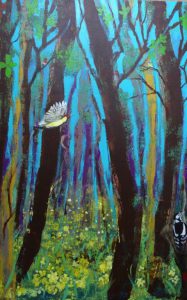
Painting by Ruth Gray, a local artist who created a wildlife painting attached to the cottage in May 2017, under the theme, “Window into Wildlife”.
There is no doubt that the cottage, and its idyllic setting, possesses a magical charm that stirs something in the heart among those who come across it. It’s difficult to put into words, but Alison Uttley’s beautiful description in her celebrated book Our Village (Cromford: Scarthin, 1984) comes close:
We passed the canal cottage, a Hans Anderson dwelling, whose little walls were reflected in the water, whose garden ran parallel to the canal. A small swing-bridge crossed the canal at this point, where the waters divided, part of the stream going to the lead wharf in the village. The cottage was the dividing place between work and play, between fairy tale and reality, and we were bound for fairy tale.
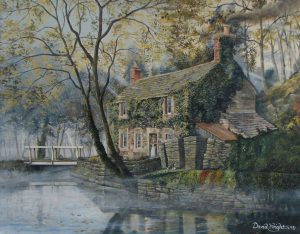
Painting by artist/modeller David Wright (copyright holder). Prints and other work available at http://www.dovedalemodels.co.uk/

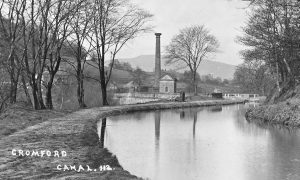
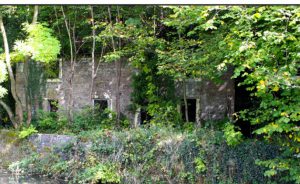
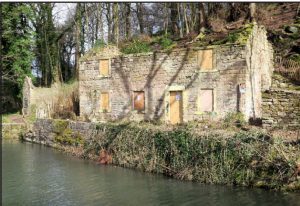
Informative article, exactly what I was looking for.